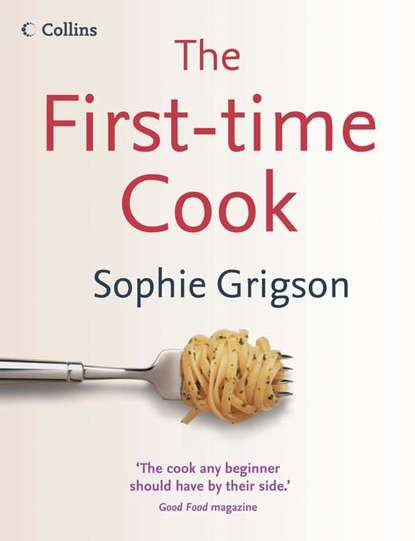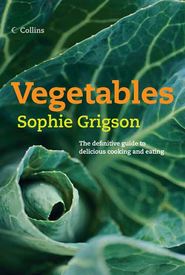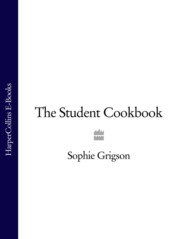По всем вопросам обращайтесь на: info@litportal.ru
(©) 2003-2024.
✖
The First-Time Cook
Настройки чтения
Размер шрифта
Высота строк
Поля
Provolone A softer cow’s milk cheese which may be young and mild (dolce) or more mature and punchy (piccante).
Buffalo mozzarella Mozzarella di bufala is the real thing, softer and milkier than cow’s milk mozzarella. It comes in packets in its own brine. Serve it drained, torn into pieces and dressed with lemon or balsamic vinegar, extra virgin olive oil, salt and pepper and a little chopped parsley, mint, or even fresh tarragon. You could also add some sliced halved cherry tomatoes for contrast, or ‘bocconcini di mozzarella’, walnut-sized mini-mozzarellas, served whole and dressed as above.
Olives Choose whichever type you like best as long as they are not those ghastly stoned black olives that taste of soap.
Sun-dried tomatoes in olive oil.
Canned marinated grilled peppers.
Marinated baby artichokes These come in glass jars. Serve them sliced in halves or quarters.
Ciabatta bread Many supermarkets now sell ‘ready-to-bake ciabatta’ which comes out of the oven crisp and golden outside, soft and slightly chewy inside, with the most tantalising smell. Warm ciabatta always seems to disappear with remarkable speed, so buy a loaf or two more than you think you will need.
Spanish Chaciñas Plate
Over recent years we have been introduced to more and more of the excellent cured pork products and cheeses of Spain, via a handful of delicatessens and now the supermarkets. These are usually referred to as ‘chaciñas’, which translates more or less as ‘cold cuts’, but taste a good deal more exciting than that sounds. To make up a Spanish chaciñas plate, take your pick from:
Jamón serrano The Spanish equivalent to Parma ham, cured high in the hills.
Chorizo A spicy salami, with a reddish hue from generous seasoning of paprika. It can either be ‘dulce’ or mild, or ‘piccante’ or chilli-hot.
Manchego cheese Spain’s most renowned cheese with a gorgeous flavour, which can either be mild or mature and is often served with ‘marmelada’ or quince paste.
Caper berries The fruit of the caper plant that grows wild around the rocky shores of the Mediterranean. Capers are the buds, but the berries or seed-pods are like tiny maracas that have been pickled in vinegar – delicious.
Olives Spain specialises in huge ‘gordo’ green olives which are sometimes sold here, but any juicy, plump-looking olive, black or green, will look good on the plate.
Canned ‘pequillo’ peppers Something of a speciality in Spain, you can sometimes find them on supermarket shelves here. Look out too for the small green padron peppers which are just beginning to hit the shops in this country.
Bread Spanish bread hasn’t made much of a mark here, so choose any handsome-looking loaf of bread to accompany your chaciñas. A sourdough pain de campagne or sturdy rye bread, warmed through in the oven, would be a good choice.
Greek/Middle Eastern Mezze
From Greece and the Middle East come some of the best ready-made starters and snacks – from hummus and taramasalata to pitta bread and now the floppier, larger Arab bread. Put them all together and you can create a magnificent ‘mezze’, a pick’n’mix of a first course.
Hummus This is the obvious starting place for any Greek-inspired ‘mezze’ and a pot of two of bought hummus can easily be dolled up to look glamorous. First of all, add a little crushed garlic if you wish to liven up the flavour, then scrape it into a small bowl, and dust the top lightly with paprika or cayenne pepper, and a drizzle of extra virgin olive oil. A small sprig of parsley in the centre adds a final splash of colour. If you have the time, you could also sprinkle over or stir into the hummus a handful of pine nuts, that have been dry-fried until golden brown for a sophisticated finish.
Taramasalata This has to be next on the list, but try to find some that has not been dyed a virulent bright pink. Natural taramasalata is a softer, honeyed colour. Again, scrape into a bowl and sprinkle over a little cayenne pepper and some chopped parsley.
Crudités Provide a selection of raw vegetables to dip into the hummus and taramasalata – carrot sticks, strips of pepper, celery sticks and so on, as well as plenty of warm pitta bread.
Gigantes beans in tomato sauce If you haven’t tasted these before, this is the moment to try them out. Usually sold in glass jars, they are similar to butter beans, bathed in a well-flavoured tomato, dill and olive oil sauce.
Canned dolmades Little parcels of flavoured rice wrapped in vine leaves, these are surprisingly good and just need to be transferred to a plate.
Purple black Kalamata olives are fat and juicy with taut skins and tip-tilted pointy ends.
Pickled green chillies These are a hot favourite in Greece, in both senses of the word – find them in jars, somewhere near the olives.
Some Classic Quick Starters
Here is a handful of quick and easy starters that never fail to please. Original? Well, maybe not, but the reason they’ve been enjoyed for so many decades is that they work so well, and cause so little angst to the cook!
Tuna and Bean Salad
This is a great (mainly) storecupboard stand-by that I often serve as a first course, or as part of a salad-based meal. It takes 10 minutes max to put together, and needs no more than some great, chunky bread as an accompaniment.
For four people you will need 1 x 400g can of cannellini beans, drained and rinsed, and a 198g can of tuna (the stuff in oil tastes nicer, but is higher in calories), drained and flaked. Mix them together with 1 small garlic clove, crushed, 1 shallot that has been finely chopped (or you could use
/
small red onion), and about
/
tablespoon chopped fresh marjoram or 1 level teaspoon dried oregano. Whisk together 1
/
tablespoons lemon juice, 3–4 tablespoons extra virgin olive oil, salt and pepper, and stir into the tuna mixture. Make a bed of rocket on a serving plate, and pile the tuna and bean salad on to it. Serve at room temperature.
Bruschetta
At its most elemental, bruschetta (pronounced ‘broos-ket-ah’) is no more than a slice of griddled or char-grilled bread, rubbed with garlic and drizzled with olive oil. This most straightforward form of bruschetta is an ideal accompaniment to antipasti (see above). For a stand-alone bruschetta that is interesting enough to make a first course in its own right, the basic bruschetta is surmounted with any one of hundreds of toppings. A serving of three pieces of bruschetta, each with its own individual character, makes a substantial starter, although you should remember when planning the meal that the bruschette (that’s the proper Italian plural) will need to be made no earlier than half an hour before guests arrive. Even better, they should be griddled and made up at the very last minute so that the bread is still warm, but that may prove just too tricky in terms of timing.
The key to success with bruschette is to source good-quality sturdy bread; if in doubt buy a loaf of pain de campagne or a sourdough loaf. Slice thickly and cut huge slices in half, or even into thirds. Then toast under the grill, or better still griddle to achieve the all-important slightly smoky flavour with a hint of charring (but no more than a hint, please!). It could also be done on the barbecue, but it seems a little excessive to get it going just for a few slices of bread! The toaster is completely out of bounds.
To griddle the bread, you will need to have a ridged griddle pan. Place over a high heat and leave to get really, really hot – allow some 5 minutes for this. Cram as many slices of bread on to it as possible, and turn once the underneath is striped with dark brown. Griddle the other side in the same way.
While the bread is toasting cut a couple of cloves of garlic in half. Rub the garlic lightly over one side of each piece of grilled bread, then drizzle a scant
/
teaspoon of extra virgin olive oil over each piece.
With the toppings, you can really let your imagination go, but to kick-start you, here are three straightforward ideas.
1 Halve several well-flavoured tomatoes (you can use cherry tomatoes if necessary), and rub them over the bread, pressing down firmly so that the juices and some of the flesh are smeared over the surface. Top with slices of jamón serrano, or Parma or San Daniele ham.
2 Instead of drizzling with olive oil, spread each slice with pesto, then top with sliced buffalo mozzarella, a piece of sun-dried tomato and a sprig of basil.
3 Top with rocket, drizzle with a little balsamic vinegar, and finish with shavings of Parmesan. To shave Parmesan, take a vegetable peeler and pull it across the surface of the block of Parmesan to create thin shavings of cheese (see left).
Melon or Figs with Parma Ham
This is one of summer and autumn’s most perfect combinations. The key is learning to choose ripe fragrant fruit. In midsummer it is the melon you should go for, whilst in the autumn the fig reigns supreme. Although you may occasionally find a magnificent melon in midwinter, it is rare, so ignore temptation in the colder months.
For this you are looking for an orange-fleshed melon, in other words a cantaloupe or charentais melon. The paler, white/green-fleshed varieties have a duller taste – not to be sneezed at, but less of a success with salty Parma ham. Use your nose. A ripe melon will smell fragrant and sweet. Press the stalk end gently: if it gives slightly then you are probably on to a winner, but double-check that there are no soft squidgy patches indicating over-ripeness or a mouldy taint. One large melon will be enough for four people.







